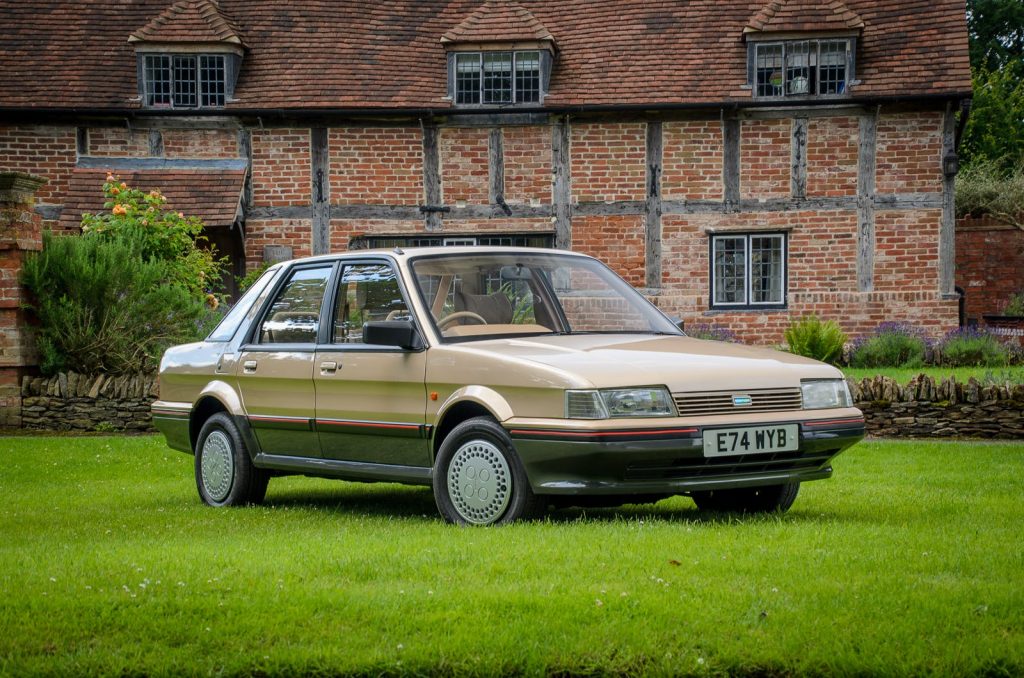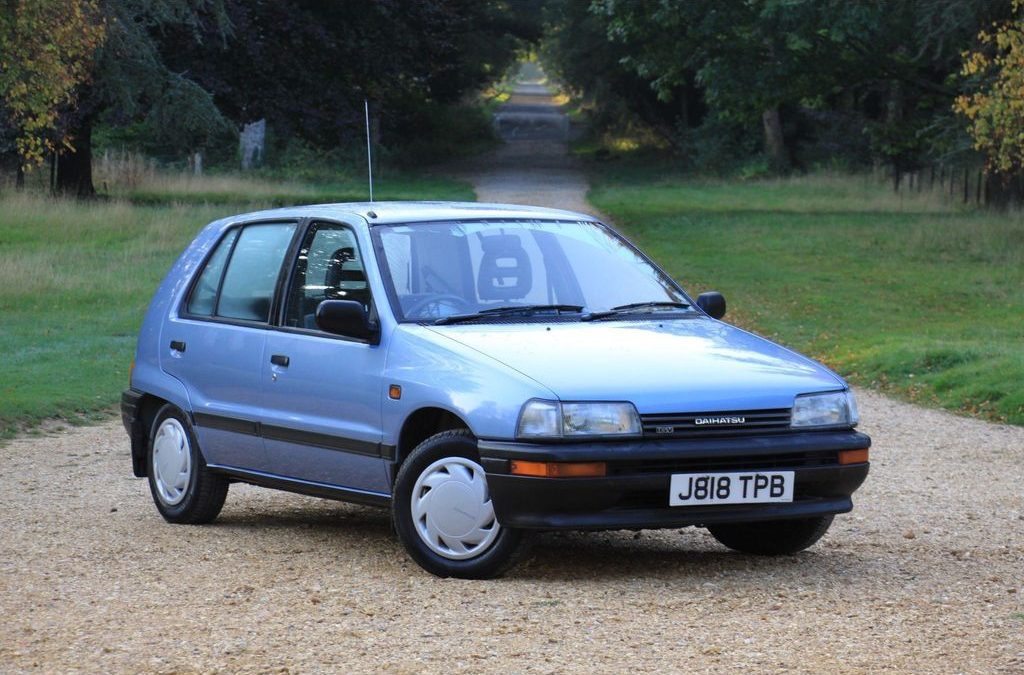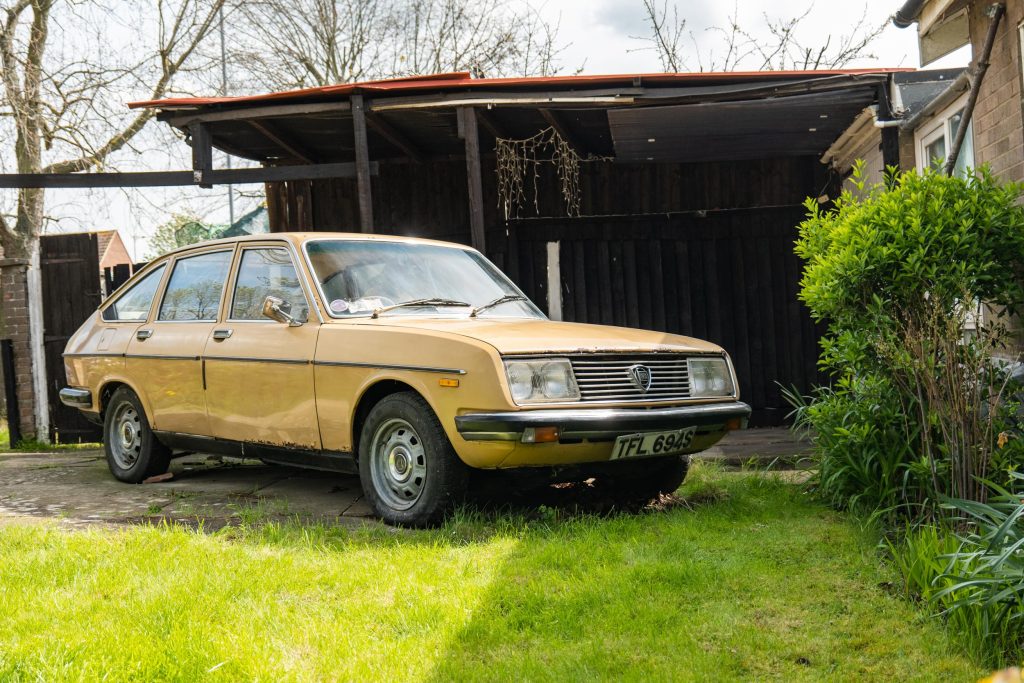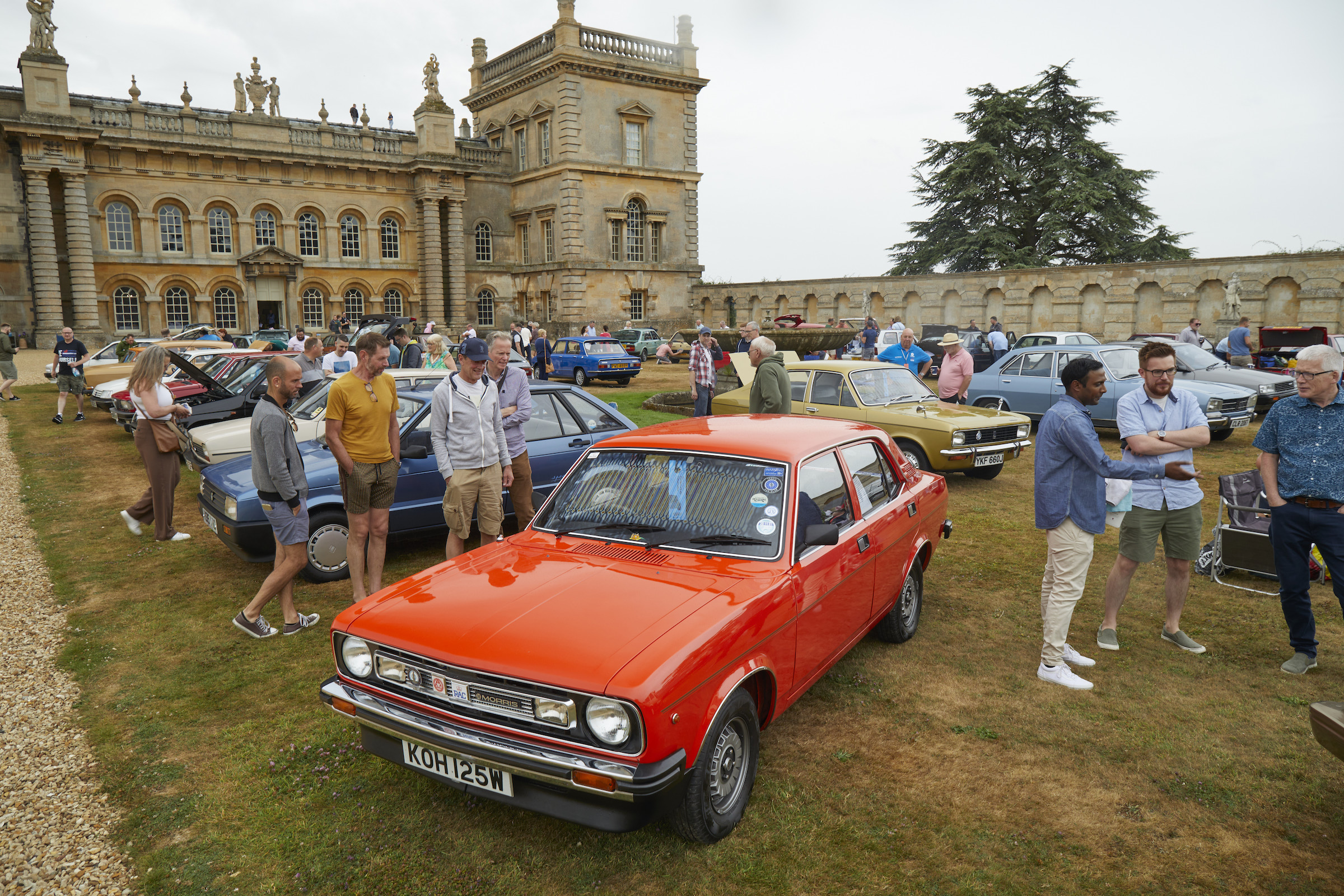What kills a car brand? Sometimes it’s scandal; we’re looking at you DeLorean. Sometimes it’s a reputation that just can’t be recovered; hello, Lancia. But most often it’s malaise. A lack of investment and innovation, a loss of interest from the buying public, and a gradual demise of dealerships – an unexceptional decline, you might say.
It’s appropriate then that the one place you’re most likely to find any survivors is at the Festival of the Unexceptional on 27 July. With their devotion to the dull, FOTU fans keep the most mundane motors alive – even if their manufacturers are long gone.
Here are 10 buried brands to look out for at the festival.

Austin
Herbert Austin founded his eponymous car company in 1905 in Longbridge, and his 1922 Seven mobilised the masses in Britain. Some 30 years later, Austin merged with Morris to form the British Motor Corporation. BMC in turn would be absorbed by Leyland to become British Leyland, then Austin Rover, before the Austin name was quietly dropped for good in 1988.
RIP: 1988
Last Car: Montego
Most likely to be seen at FOTU: Metro

Daihatsu
Japan’s Daihatsu made its first engine in 1907, moving on to three-wheelers in the 1930s but it wasn’t until 1965 that the company began selling cars in the UK with the Compagno Berlina. The Charade, Hijet van, Terios SUV, Copen roadster, and Sirion hatch provided inexpensive, compact and quirky transport throughout the Nineties and Noughties, but in 2013 Daihatsu made the decision to withdraw from Europe.
RIP: 2013
Last Car: Sirion
Most likely to be seen at FOTU: Charade

Datsun
Datsun’s roots can be traced to 1911, with the first DAT car being produced in 1914. The company was taken over by Nissan in 1934, but the Datsun nameplate was retained. By 1958 the company’s domestic models wore the Nissan badge while export cars stuck with Datsun’s patriotic rising sun logo. Those cars began to arrive in the UK in 1968 and models such as the Sunny and Cherry helped make Datsun the most popular foreign car brand in Britain. The parent company clearly wanted to take credit though, and from the early 1980s the Datsun name was phased out in favour of Nissan.
RIP: 1984
Last Car: Micra
Most likely to be seen at FOTU: Cherry

Daewoo
Originally established in 1937 as National Motors, the South Korean car company went through a variety of rebrands until the name Daewoo stuck after its acquisition by the Daewoo Group in 1982. Daewoo entered the UK market full of promise in 1995, offering a new kind of buying and ownership experience through its factory-owned dealer network and bumper-to-bumper warranties. The peace of mind that came with a Daewoo was exceptional, and its “That’ll be the Daewoo” tag line was certainly catchy, but the actual cars were mediocre at best. Daewoo went bust, exited the UK market, and was sold to GM in 2002.
RIP: 2002
Last Car: Matiz
Most likely to be seen at FOTU: Espero

Lancia
Lancia’s illustrious history began with Italian racing drivers Vincenzo Lancia and Claudio Fogolin in 1906. It saw countless innovations, from the monocoque chassis to the five-speed gearbox and V4 engine, as well as motorsport dominance in the World Rally Championship. But it all came to a grinding halt, in the UK at least, in 1993. Rust, reliability, and shoddy dealer service were obstacles that no amount of positive publicity from the world of rallying could overcome. There’s a chance that, under Stellantis, a newly electrified Lancia could return to the UK, so fingers crossed.
RIP: 1993 (UK)
Last Car: Delta
Most likely to be seen at FOTU: Beta

Morris
William Richard Morris started his career in the bicycle trade, but switched two wheels for four when he started WRM Morris Ltd in Oxford in 1912, naming his first car after the town. The Morris Minor, designed by a pre-Mini Issigonis, demonstrated the company’s engineering excellence, while Morris’s business acumen saw his Nuffield Organisation take over Wolseley, Riley, and MG. Merged with Austin to form BMC in 1952 and then again with Leyland in 1968, it’s ironic that the Morris name was among the first of the Great British car brands to disappear when the last Ital was produced. China’s SAIC bought the Morris trademark when it took over MG, so it, too, may be born again.
RIP: 1984
Last Car: Metro van
Most likely to be seen at FOTU: Marina

Mitsubishi
The mighty Mitsubishi may be one of Japan’s biggest industrial players, with a history dating back to the 1870s, but its automotive arm was only established in 1970. By 1974, it was importing cars to the UK, where the quality and value of Japanese cars was already beginning to kill the domestic brands. Eventually there would be a huge range spanning hatchbacks, SUVs, and sports cars. Early adopters of the plug-in hybrid also flocked to Mitsubishi showrooms, but it wasn’t enough to sustain the business and the plug was pulled in 2021.
RIP: 2021 (UK)
Last Car: Outlander
Most likely to be seen at FOTU: Colt

Rover
From its beginnings as a bicycle maker, Rover was building cars from as early as 1904, but it was post World War II with the P3 and P4 that Rover really began to show its engineering expertise. There were experiments with gas turbine power and a Car of the Year win for the P6 2000 in 1964. Rover was bought by Leyland and then became part of the British Leyland conglomerate. Rover seemed perpetually in financial trouble and had to rely on lightly rebodied Hondas for survival under British Aerospace, while even with the backing of BMW it struggled. The 75 was to be its saviour, but BMW then famously sold out to the Phoenix Consortium in 2000 for a single pound. Overambition and more financial mismanagement saw production end in 2005.
RIP: 2005
Last Car: 75
Most likely to be seen at FOTU: 200 Series (SD3 model)

Triumph
Like almost every British car brand, Triumph has a turbulent history. In 1889 the firm began building bicycles in Coventry and added motorcycles to the mix in 1902. In 1921, Triumph acquired the Dawson Car Company and built its first four-wheeler. The two-wheeled business would be sold off in 1936, but that wasn’t enough to prevent the Triumph Motor Company from entering receivership in 1939. After the war, it was bought by the Standard Motor Company and subsequently acquired by Leyland in 1960. The last of Triumph’s famous TR line of roadsters would be the TR7, while the final vehicle to bear the name was a badge-engineered Honda, the Acclaim.
RIP: 1981
Last Car: Acclaim
Most likely to be seen at FOTU: Acclaim

Yugo
Zastava was already 100 years old when it acquired the rights to build Fiat models in 1953. In 1980, the Yugo was born as a reworked 128, with parts produced by the different Yugoslav republics. A UK importer was found in 1981, and the cheap-as-chips cars sold well enough for Zastava to hire Giorgetto Giugiaro to design the bigger Sana. However, as the War of Yugoslav Succession unfolded, exports halted and the UK operation was closed.
RIP: 1993
Last Car: Zastava Koral
Most likely to be seen at FOTU: Yugo 45
If you want to hunt zombie cars, seek out the driving dead, or just mooch around the most mundane motors in Britain, then get your tickets for the biggest and best Festival of the Unexceptional here.








Never actually owned any of these, but driven quite a few especially the Marina. Our local Yugo dealership Russ Rigby of Hindley Green shifted loads of them always seemed to be busy. He was so successful he opened another branch in Wigan.
My first car, bought for me for £200 by my dad was a viva hb, got me to college and was much loved. For a while he told me it was a firenze which sounded a lot cooler. Also at one point has a mg maestro which was the worst car I’ve ever owned , it rotted away and always felt unsafe on wet roads.
I own a Mitsubishi Colt Mirage (1984) which proved to be one of the best cars I have ever owned along with my Mercedes 350 SE (1980) .The Mitsubishi has 85000 on the clock and the Mercedes 28000) The worst car I have ever owned has been the Rolls Royce Silver Spirit III (1996) which has given me no end of trouble with the ECUs asked the RR agents to cancel all my electronics on that car and having done so I no longer
have any problems with it.(It has 18000 on the clock) My Jaguar Mk VIIM (1955) has also been troublesome with the odometer registering three times round the clock with after engine restoration by the Jaguar factory now has 48000 miles. My MG B roadster (1965) which has registered 48000 miles has been trouble free throughout and I class it as one of my best 5 classic cars with the Mitsubishi and Merc.
While Rover wilted away under BL, its spin off brand LandRover could not have been healthier. Maurice Wilkes’ trip to Detroit in the 1960s was a saviour for the whole motor industry as he found the aluminium Buick V8 hidden in a shed which became the power plant of all Rovers – the P5B, and P6 and the SD1 the Defender and the Range Rover as well as jump starting the businesses of TVR, Marcos and Morgan.
What a shame that the British motor industry couldn’t pull itself together & hold its own against foreign competition.
Look at the situation now – obviously Germany & Japan dominate but watch out for the Koreans & now Chinese catching up fast especially with EVs.
I have owned a few Morris cars (Minor, Major, and Major Elite – an Australian only model), and I’ve owned two Triumphs – a 2000, and a 2500TC, which I still own.
Just a minute! The Rover 75 was exceptional. It may have been a half timbered pub on wheels as JC said, but it was metallic painted and plush and cosy, and satisfied it’s buyers as much as a Jaguar. That’s exceptional.
Agreed.
Mine is 21 years old, I’ve owned her for 19 years, she’s as lovely as when I first purchased her.
With her great styling, she stands out from all the amorphous blobs you see on the roads today.
Ah yes, the Rover 75 was really just another unexceptional in a long line of lukewarm cars, but last week I discovered that they actually produced a 75 with a Mustang engine! That’s right, 4600 cc! They didn’t make many, but they are still fetching some big money. Here’s an example – AND its an estate! https://www.carandclassic.com/l/C1720028
Admittedly the Buick V8 would eventually find itself into the Morgan Plus 8, however given that the Morgan Motor Company has been in business for over 110 years, they already had a well-established business long before the 1960s and the Plus 8 was only a part of a larger offering that continues to this day. Not exactly jump starting…….
What about Proton? I worked for Proton UK when the cars first arrived in the UK. They were well made, previous-generation Mitsubishis that found a ready market. I remember that in the plate change month of August 1989, we sold every car that we had in the UK!
I had an MG ZTT (nee Rover 75). It was a brilliant car, one of my all time favourites. It had a measly 120 hp BMW diesel but across country there was little that could touch it. Fantastic brakes, from a M3 I think, that allowed you to brake later than anyone when approaching an island, brilliant grip and road holding. A truly under rated low flying sports saloon/estate.
I owned two Austin A60,s and two Maxis over the years. My wife had a Marina and two Morris badges Minis.
I still own a Rover 75 Tourer as my everyday car – I’ve never owned a foreign car! (Yet).
FSO would be another re-engineered old fiat eastern block offering. I’m a mechanic and I worked with a guy who used to work for an FSO and Zastava dealer in the early 90s when he was younger, he told me the cars were awful but they were so cheap that one year at plate change time the dealership he worked at sold more new Yugo and FSO than BMW managed to sell in their entire area network. This would have been late 80s/early 90s. He said they had so many cars to prep, and he was in his early 20s so no family or commitments at that point, that the boss pitched a caravan on site and him and another mechanic lived there for 2 weeks working 16 hour days to get the cars ready, by which time the boss didn’t have enough cash on hand to pay them so told them to take their pick of the trade ins to sell on to make the money he owed them.
My first car was a Morris 1300 2 door. In red on a ‘J’ registration. Originally designed by that fwd genius who also designed the Mini.